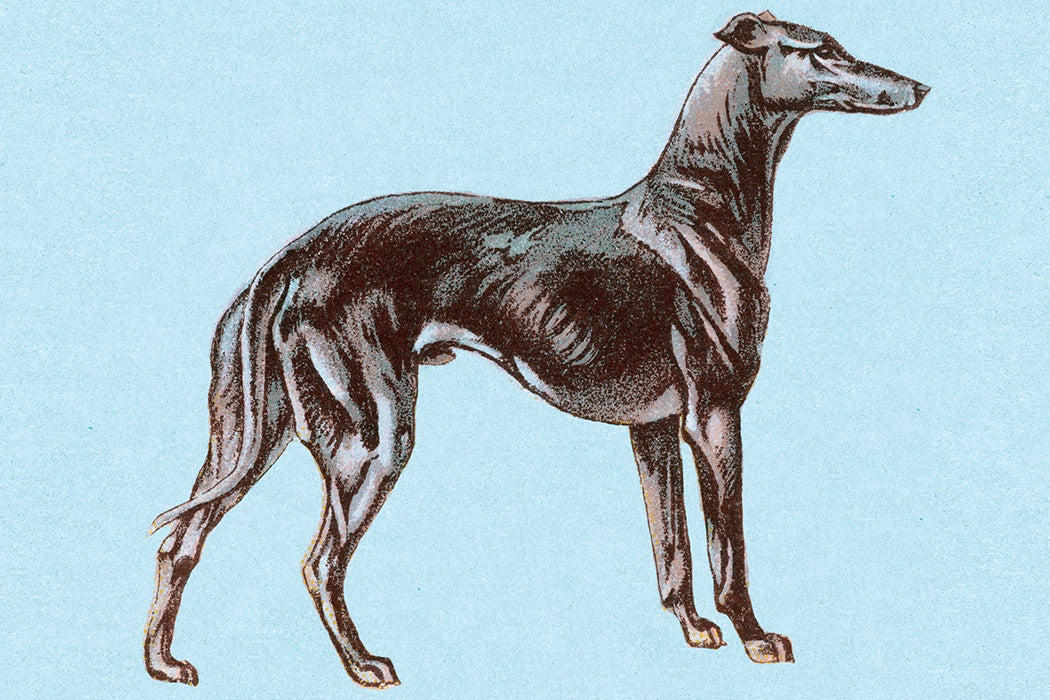Today greyhound racing is banned almost everywhere in the United States, and it’s been controversial since it began. But, as Steven A. Riess writes, for a brief moment a century ago it was wildly popular in the Chicago area, thanks in no small part to Al Capone.
Greyhound racing began in the late nineteenth century and expanded in the early twentieth after the invention of the “inanimate hare conveyor,” which spun a fake rabbit around a course for the dogs to chase. After an unsuccessful start in the early 1920s, it really arrived in the Chicago area in 1926 with the founding of the Illinois Kennel Club. Investors included Capone and his associate Frank Nitti. The track used a betting system that had been ruled legal in horse racing: Spectators became “investors” and might share the “prize money” won by the fastest dog.
More tracks opened in Chicagoland over the next few years, often with investment by Capone and his crowd. For the mobsters, sporting operations represented opportunities for money laundering, fixed contests, and simple entertainment. Capone himself was a sports fan who enjoyed betting, and, particularly, winning. He was said to show up behind the scenes before a race and feed greasy hamburgers to all the dogs except the one he was backing. And if a race didn’t go his way, he might walk to the judge’s stand and successfully request a change in the outcome. In general, race-fixing was common. Methods included putting pebbles between a dog’s toes, tying rubber bands around their feet, or even just swapping out one dog for another.
Dog racing had numerous enemies, including horse racing partisans who viewed it as low-class, animal welfare advocates who worried about the dogs’ wellbeing, and small businessmen who wanted bettors to spend their money at their establishments instead. Another complaint was that the operators took advantage of gamblers, particularly women, who were assumed to lack betting savvy. Newspapers criticized the sport for mob involvement and fixed races, refusing to print dog race results.
Weekly Newsletter
Greyhound racing was never strictly legal in Illinois. Race organizers claimed paper-thin covers like arguing the “kennel clubs” were working to improve the greyhound breed and that bets were “voluntary contributions” to help in this effort. Sympathetic judges issued temporary injunctions to keep courses open for one season at a time.
But, in 1929, a new state’s attorney, John Swanson, got more serious about shutting the races down. And the next year, Capone was indicted for tax evasion, including failing to report income from dog racing. Some greyhound racing courses hobbled along for a few more years, under frequent attack by authorities. But by the mid-’30s, the sport was finished in Illinois.







